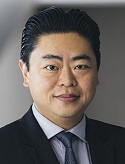How Can Biosimilars Make Headway In The U.S. Market?

By Anna Rose Welch, Editorial & Community Director, Advancing RNA

ISPOR, the professional society for health economics and outcomes research (HEOR), recently held its annual conference, which brought together nearly 4,000 researchers, regulators, payers, drug developers, providers, and other stakeholders from across the healthcare continuum. During one panel session, experts in biosimilar regulatory, legal, and reimbursement discussed the crucial elements needed to foster a robust and sustainable U.S. biosimilars marketplace over the long term. Participating in the panel session were:
- Anita Burrell, SVP, Global Market Access Insights, Eversana (moderator)
- Chad Pettit, Executive Director, Global Value Access and Policy, Biosimilars Business Unit, Amgen
- Ha Kung Wong, Partner, Venable Fitzpatrick
In this Q&A, the participants share their thoughts on how the biosimilar market is currently unfolding in the U.S., some of the lessons that can still be learned from other countries, as well as what have been the biggest innovations to occur in the biosimilars space thus far.
What is your area of expertise within the biosimilars field?
 Anita Burrell, Eversana: I became interested in the biosimilar field when I was asked a very provocative question, “Do you think that biosimilars need to have Real World Evidence?” I wanted to explore the question in detail, and this led to a series of articles that I wrote for Biosimilar Development. However, I have since been able to go deeper in the research performed by Eversana so we could understand the hurdles to market access and learn from experiences in different countries.
Anita Burrell, Eversana: I became interested in the biosimilar field when I was asked a very provocative question, “Do you think that biosimilars need to have Real World Evidence?” I wanted to explore the question in detail, and this led to a series of articles that I wrote for Biosimilar Development. However, I have since been able to go deeper in the research performed by Eversana so we could understand the hurdles to market access and learn from experiences in different countries.
 Chad Pettit, Amgen: My nearly 20 year of experience at Amgen have included service as the Amgen board member of the Biosimilars Forum industry trade group, and a career focus on pricing, market access, and policy crossing all global regions in a broad range of roles in the U.S. and Europe. I lead development of Amgen’s global market access launch strategy for our portfolio of 10 biosimilar medicines.
Chad Pettit, Amgen: My nearly 20 year of experience at Amgen have included service as the Amgen board member of the Biosimilars Forum industry trade group, and a career focus on pricing, market access, and policy crossing all global regions in a broad range of roles in the U.S. and Europe. I lead development of Amgen’s global market access launch strategy for our portfolio of 10 biosimilar medicines.
 Ha Kung Wong, Venable Fitzpatrick: I’ve practiced pharmaceutical Intellectual Property law for over 20 years, specifically in areas of litigation and transactions concerning small molecules and biologics. I’m an Advisory Board member of the Center for Biosimilars and frequently provide opinions on the legal aspects of biosimilars in the U.S. and EU, as well as the potential impact of court decisions and regulatory guidances.
Ha Kung Wong, Venable Fitzpatrick: I’ve practiced pharmaceutical Intellectual Property law for over 20 years, specifically in areas of litigation and transactions concerning small molecules and biologics. I’m an Advisory Board member of the Center for Biosimilars and frequently provide opinions on the legal aspects of biosimilars in the U.S. and EU, as well as the potential impact of court decisions and regulatory guidances.
What have we learned from biosimilar experience in Europe, and do you think that this has implications for some of the hurdles to biosimilars in the U.S.?
Pettit: Because of the tremendous variation across health systems, only general learnings can be taken from Europe that are relevant to the U.S. market. One key learning that is emerging in Europe is the need for markets to encourage competition between the originator and biosimilar products with a vision for sustainability over multiple contract cycles. For example, we are encouraged by the multi-winner approach that has been implemented in the UK, which encourages continued biosimilar investment, as well as product and service innovation. If the right balance is struck, biosimilar competition produces meaningful savings that will endure well into the future.
A second key learning is the need for scientifically accurate educational outreach, to create confidence with providers and patients. To achieve uptake and proper use, manufacturers, physician groups, patient groups, and health systems need to invest in education.
Wong: Uptake increases over time as doctors and patients have more positive experiences with biosimilars. I think we’re likely to see this over time in the U.S., due to increased biosimilars use, improved patient experience, and increased cost savings.
Governmental regulation can have a big impact on biosimilar usage. Drug usage is more regulated in Europe, and policies to increase biosimilar usage such as tenders (competitive bidding process that rewards the party/parties with the best prices), prescribing quotas and targets (goals for prescribing biosimilars in a certain percentage of patients), and national guidelines that recommend using biosimilars in naïve patients have helped to increase usage in Europe.
There have been significant discussions in the U.S. about the need for improved pharmaceutical regulation, but no significant legislation has yet been passed to increase biosimilar usage. Unfortunately, while a step in the right direction, many of the pending bills don’t really take significant steps to increase usage.
For example, the Biologic Patent Transparency Act requires disclosure of patents in the FDA’s Purple Book and limits enforcement of patents that aren’t listed. While this could add transparency to the patent litigation system and may allow biosimilars to come on the market a little sooner, it doesn’t address actual prescribing of biosimilars. As we can see from the current uptake of biosimilars in the U.S., getting doctors to prescribe biosimilars is a significant hurdle even after they’ve been approved.
Also, Hatch-Waxman Integrity Act would require a biosimilar manufacturer to certify that it hasn’t and won’t file an inter partes review or post-grant review proceeding if it intends to use the biosimilar 351(k) application pathway. The impact of this bill on approvals is currently unclear. On the one hand, it could streamline patent challenges by focusing on a single pathway per biosimilar; but on the other hand, it could potentially become problematic for biosimilar companies looking for quicker verdicts via inter partes review (IPR).
A bill introduced on May 23, 2019 by Senators Enzi and Hassan seeks to improve education on biosimilars. It would require the Department of Health and Human Services (HHS) to create a central website for educational resources on biosimilars, require the HHS secretary to establish a database that would help medical professionals easily compare data on biologic and biosimilar products, and provide incentives for medical providers to learn more about biosimilars. This legislation is promising in terms of improving biosimilar uptake in the U.S. However, it still falls short of the measures that have been taken in the EU that go beyond education to encourage prescribing such as using quotas/targets and using competitive bidding to decrease prices.
In addition, the prices have also decreased faster in the EU than they have in the U.S. so far. This likely has also contributed to the increased usage.
What do you see as the greatest market access hurdle/challenge to overcome in the Biosimilars field within the US market?
Wong: Inexperience with biosimilars and a lack of significant price decreases to motivate doctors and patients to switch to a drug with which they have less experience and may be hesitant about using.
Burrell: Market access depends on acceptance at all levels of the healthcare system — patients, physicians, as well as payers — and while the FDA has been proactive in education regarding biosimilars, we know from research in Europe that physician resistance remains an obstacle even though biosimilars have made major gains in these markets. The main challenge for biosimilars in the U.S. market will be creating a competitive environment with multiple alternatives, so payers will have an incentive to promote them and we can realize the benefits of these products to enhance the efficiency of the healthcare system in those areas where biosimilars can play a role.
Pettit: The U.S. biosimilars market is really taking off. Thanks largely to an FDA regulatory framework that is scientifically sound and highly efficient, the rate of regulatory approvals in the U.S. at this point is slightly ahead of where Europe was during a comparable period after biosimilars were first approved there. Plus, the rate of market uptake is roughly the same and expected to accelerate in the U.S.
To date, the FDA has approved 20 biosimilar license applications for nine reference products, seven biosimilars have launched, and there were 77 biosimilar development programs enrolled as of end of FY2019 Q2. Short-acting granulocyte-colony stimulating factor (GCSF) competitors have achieved 67 percent market share over three and a half years, long-acting GCSF biosimilars achieved 20 percent market share in just nine months, and a single epoetin alfa biosimilar achieved 12 percent market share in just six months.
The current early success of the U.S biosimilars market has been a result of three crucial elements: (1) appropriate regulatory standards that ensure safety and efficacy and strengthen stakeholder confidence, (2) a market that encourages competition on a level playing field to achieve meaningful savings and long-term stability, and (3) scientifically accurate educational outreach to drive uptake and proper use of biosimilars.
The critical challenge right now is not to lose sight of the importance of these success factors.
What do you think could be and should be done to address these challenges?
Burrell: The FDA is already making strides to encourage the biosimilar field, but we will have to ensure that biosimilars are able to make market share penetration through increased and coordinated educational efforts for all stakeholders, pharmacists, payers, patients, and physicians. We should not wait for the first approved interchangeable biosimilar to move forward in ensuring acceptance of biosimilar usage by U.S. stakeholders.
Pettit: As a manufacturer of originator biologic products, as well as biosimilars, we know there’s no need for government policies to force prescribing of biosimilars, rather than originator products, to achieve biosimilar uptake and savings. We need to sustain policies that are already demonstrating that head-to-head competition between biosimilar and originator biologics on a level playing field can generate meaningful savings.
The current regulatory environment and reimbursement incentives are fully sufficient for biosimilars to compete and achieve uptake. We need to be patient and maintain the policies that are fostering a robust and successful biosimilars market now and over the long term. There are many more launches coming.
Wong: I agree with Anita that increased education is crucial. Many patients and doctors are unaware of biosimilars or are concerned about their safety and efficacy. Education is also needed on what interchangeable means, to ensure patients and physicians know that both biosimilars and interchangeables are safe and effective, and that interchangeables aren’t necessarily better or safer than biosimilars — they’ve just gone through additional testing.
Obviously, prices of biosimilars need to decrease so physicians see a significant enough cost savings to switch from drugs with which they have more experience.
Also, there needs to be a focus on payers. Some of the biggest changes in uptake have been due to payers making an effort to increase biosimilar usage. Payers not putting biosimilars on their formularies also drastically hinders their usage because doctors don’t want to prescribe drugs that insurance won’t pay for.
Finally, I agree with Chad, that we need to give it more time. The EU market has become more biosimilar-friendly as more experience has been gained with biosimilars. The U.S. market doesn’t have that many approved and launched biosimilars yet and doesn’t have many years of experience with them. As doctors gain more positive biosimilars experience, they’ll be more likely to prescribe them. Also, once there are approved interchangeables, market share will increase due to automatic substitution.
Realize that lack of significant biosimilar uptake doesn’t necessarily mean that we aren’t seeing cost savings — or won’t see savings in the future as competition increases. Originators are offering bigger rebates and discounting prices to keep pace with biosimilar price discounts, which still leads to overall savings. For example, Humira was discounted up to 98 percent in the EU after biosimilars went on the market, even winning the tender in Norway so biosimilars wouldn’t be prescribed there. However, we should be careful not to make this a race to the lowest price, as we could consequently remove any incentive to invest in biosimilars at all.
What do you think has been the greatest innovation within the biosimilars space over the last year or two?
Pettit: One important example is the FDA final guidance on how to demonstrate interchangeability, which is meaningful to biosimilar manufacturers like Amgen because it provides greater certainty for our development programs.
A second key example of a policy working well to support market competition is how Medicare Part B reimburses for originator and biosimilar products with separate payment codes based on their respective “average sales prices”, and provides physicians the same markup regardless of whether they prescribe an originator or a biosimilar. This means all manufacturers can compete on equal terms.
Burrell: Biosimilar manufacturers have realized that they need to convince patients, providers, and payers with evidence from the real-world use of their medicines, and this has greatly increased the confidence in using these medications. There are now 90 switching studies in the literature that have enrolled 14,225 unique individuals — including large studies such as NOR-SWITCH, which is the foundation for allaying fears that there would be any difference in efficacy, safety, or immunogenicity outcomes for those patients switching from reference infliximab to biosimilar infliximab versus those that continued treatment with the reference product.
What are the key areas for improvement within the industry?
Wong: We have touched on several already, but one is education. Again, more education is necessary for doctors and patients to understand the safety and efficacy of biosimilars and interchangeables.
Another area is pricing. Discounts for drugs with biosimilars vary from about 10 to 35 percent in the U.S. currently, compared to as much as 90 percent in the EU. Cost decreases in the U.S. will help with uptake.
Payment/reimbursement is also a major one. Payer systems in the U.S. are very complex and lack transparency. Greater visibility into patient out-of-pocket costs and payer reimbursements would help doctors and patients make more cost-effective treatment decisions.
Lastly, greater government involvement in education, pricing transparency, and patent disputes could improve biosimilar approval and uptake. Changing Medicare policies to encourage biosimilar usage could also drive uptake.
Burrell: There is still a lot to be done to gain the confidence of medical professionals and patients relating to biosimilars. While a lot of hesitation may be overcome with education, in many cases the ability to experience the continuation of clinical benefit from a switch may be the most feasible option, especially if this is under a performance-based agreement to reduce risk. On the payer side, there are also key improvements to be made, including removing the need for step therapy or prior authorization on the reference biologic before patients are able to access a biosimilar. This is a practice that, as former FDA Commissioner Scott Gottlieb notes, there is “no clinical rationale for,” due to the fact that in order for a biosimilar to be approved, the developer must demonstrate that the potential biosimilar has no clinically meaningful differences to the reference product.
Pettit: Right now, science-based education about biosimilars is the most important area to promote a sustainable, robust market. All stakeholders will benefit from information about how biosimilars are manufactured and developed, how they are approved by regulators, the concept of extrapolation, and clinical considerations for their use. Providing scientifically accurate education to all stakeholders in the biosimilars ecosystem, including healthcare providers, is crucial to driving uptake of biosimilars.
